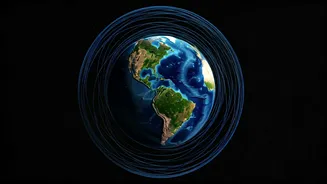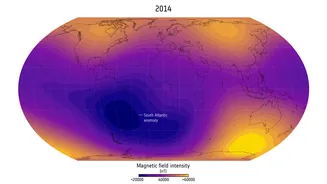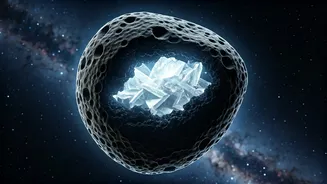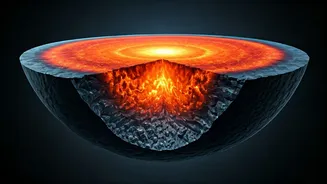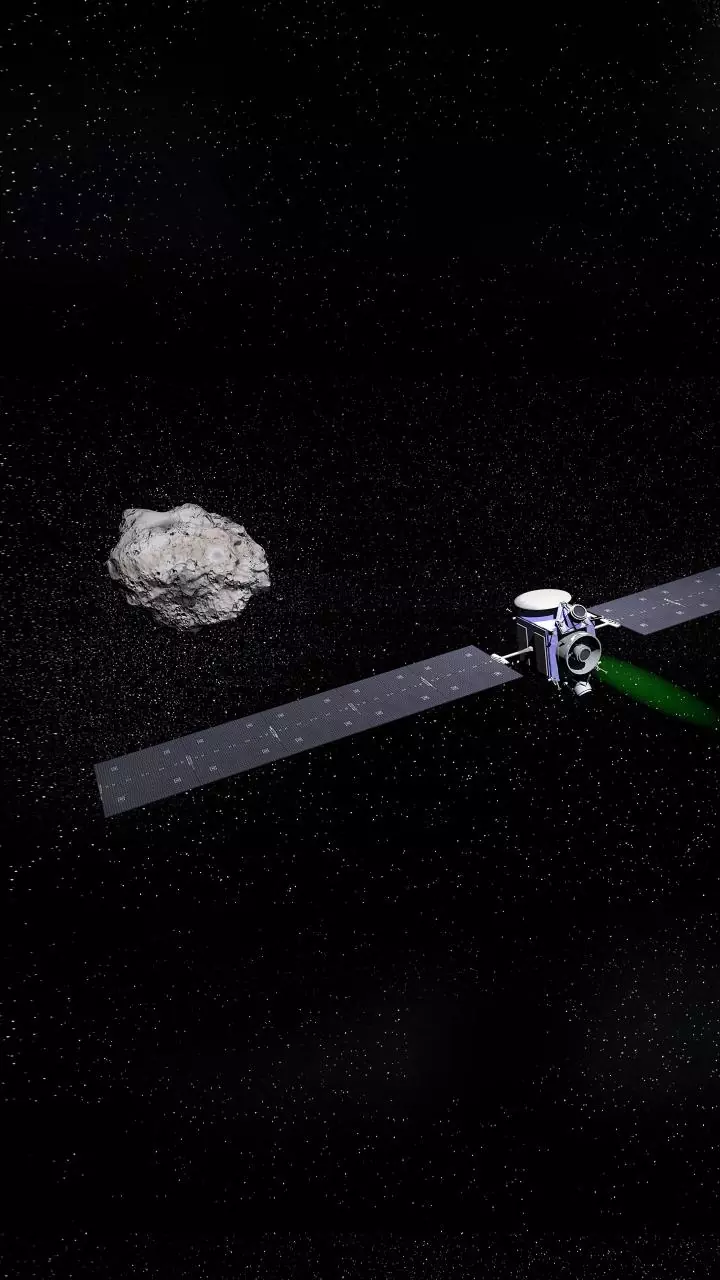Magnetic Field Dynamics
Earth's magnetic field, a crucial shield protecting us from harmful solar radiation, isn't static. It's in a constant state of flux, shaped by the movement
of molten iron and nickel in the planet's outer core. This process, known as the geodynamo, is far from uniform. The uneven flow of these conductive materials leads to variations in magnetic flux, resulting in areas of concentrated and weaker magnetic intensity. These 'weak spots' are a natural feature of our planet's dynamic magnetic field, evolving over time. Scientists emphasize that these changes are part of the normal geomagnetic variation and are not a sign of an impending magnetic reversal or collapse, providing reassurance that these fluctuations pose no immediate threat.
South Atlantic Anomaly
One notable weak spot is the South Atlantic Anomaly (SAA), an area of diminished magnetic field intensity. This anomaly, located over the South Atlantic Ocean, has been under scrutiny by scientists. Recent studies utilizing data from the European Space Agency's 'Swarm' mission have revealed that the SAA has expanded since 2014. The data indicates that it now covers approximately 0.9% more of the Earth's surface compared to 2014. Despite this expansion, researchers reassure that these changes fall within the expected limits of natural geomagnetic variation. They emphasize that while the SAA is a fascinating subject of study, it doesn't pose an immediate danger or indicate an imminent field reversal.
Geodynamo's Role
The Earth's magnetic field is a direct consequence of the geodynamo process, which occurs deep within the planet's core. This geodynamo is driven by the movement of the molten iron and nickel. Since this internal flow isn't consistent, areas of concentrated magnetic flux emerge alongside regions where the flux is spread out. These fluctuations cause weak spots like the South Atlantic Anomaly. The magnetic field is continuously reshaped as the molten core moves, causing these weak regions to expand, contract, or migrate. These shifts are a characteristic of the Earth's natural magnetic field variability, happening over decades without risking the planet's overall magnetic protection or signaling a magnetic reversal.
